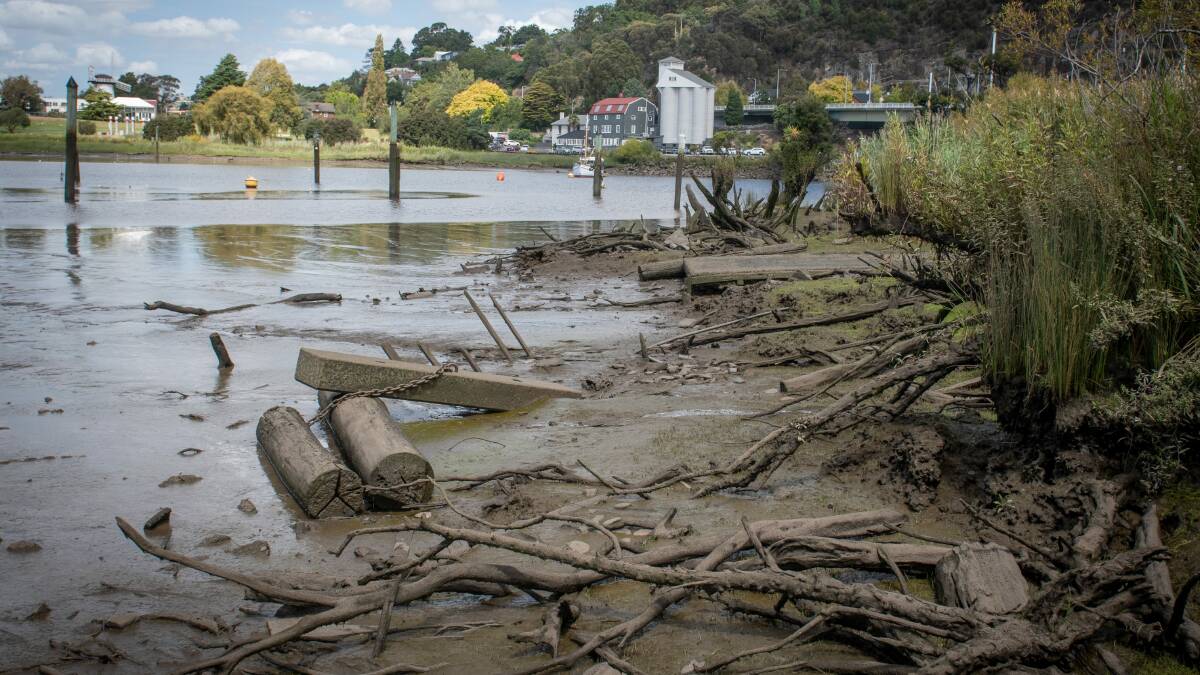
SOMETHING OF A HIDDEN GEM
MY wife and I live aboard our 12 metre catamaran, which we built in Port Sorell. About 12 months ago, we were in the Mersey River when COVID hit, and travel restrictions were imposed.
Subscribe now for unlimited access.
or signup to continue reading
Like many, our plans for 2020 were thrown into disarray, and we decided to moor our boat at Seaport Marina, Launceston and return home to Alice Springs, to sit out the pandemic.
Leaving Devonport at 3am, readers can imagine our anxiety as we made the passage along the coast in darkness. There were uncertain times ahead for us all.
As we made our way up the Tamar our spirits were lifted by the sheer beauty.
At places, the Tamar river is simply breathtaking. It occurred to me that it is something of a hidden gem.
Considering the size of Australia, we have surprisingly few navigable rivers, making the Tamar a unique boating experience, perhaps the nearest we have to cruising a European canal.
We are now back aboard our home. We thoroughly enjoyed our time at Seaport.
Locals have enthusiastically embraced the re-developed waterfront, judging by the numbers using the boardwalk and the excellent Riverbend Park. The council is to be congratulated.
We were shocked, however, to see the extent of silting at Seaport Marina, with a number of the births drying out at low tide.
It would be a tragedy if Launceston is lost to river tourists and visiting boaties.
We will be encouraging the boating community to include the Tamar to Launceston as a destination.
Peter Imms, East Coast Australia.
WHAT HAVE THEY GOT TO LOSE
GAYLE Sloan opens her article on container deposits (The Sunday Examiner, February 21) with a sledge against the beverage industry.
"'Incessant whinging" and so on. OK, yet she represents an organisation whose web site indicates they have a board member from Veolia. She ought to tell us who else she represents.
One of her organisations' goals, according to their web site is for 50 per cent of waste levies to go to the industry. Nice one if you can get it.
Having been part of the "plastic bag free Coles Bay" and being a local councillor I am pleased to see progress being made.
However, when the first you hear is a government announcement, together with government spin, that has been agreed to by the LGAT, no consultation, it's not good enough.
There is a lot of money involved here. As with many things, the devil is in the detail.
I believe that as a councillor, my community needs to understand the proposals and be able to choose the model that is the best for us all. We could start with some proper community briefings.
The minister and the LGAT could open up on this. If the model is so good, what have they got to lose? With a bit of luck, some genuine consultation could occur and an end to the unsupported assertions.
Cr Peter Kearney, Lanena.
QUESTIONS OVER THYLACINES
The Tasmanian Museum and Art Gallery says fresh thylacine sightings were likely a pademelon (The Examiner, February 24) in which TMAG clings to the view that the animals became extinct in 1936.
Yet The Examiner also reported, by the same journalist on January 24, research by the University of Tasmania based on 1200 sightings that the thylacine is likely to have become extinct much later than first thought, in the late 1990s.
Frankly, the article last month seemed far better researched, was based on over a thousand sightings and is at odds with the TMAG opinion which is subjective, and dismissive and derogatory of those who don't share its view that the animals became extinct 80 or more years ago.
Mark Westfield, Freshwater.
RESPECTING OUR ENVIRONMENT
WITH the forthcoming duck season, I would like to express my opinion as a responsible huntsman.
My responsibilities include: a firearms licence, game licence, duck identification test, relevant written permissions to enter crown, reserve and private lands, and fees for duck-hides, which are maintained, and in some circumstances, have been in the same family for generations.
To maintain my shooting accuracy before the duck season, I participate in clay target shooting at my local club.
I am particularly concerned with the quick retrieval of duck or ducks, aided by a well-trained dog.
The social and food aspects should not be underestimated, as the enjoyment of duck as part of a meal with family and friends, is often overlooked.
I respectively consider all opinions, but my decision is based upon a lifetime and respect for the wonderful Tasmanian environment.
Nigel Lewis, Swansea.
A SUGGESTED SOLUTION
WHY don't we make use of old tyres looped together to build a boat-friendly river embankment from Tailrace park to Launceston Gorge?
The first level to high tide, with a second level a metre or two back to raise land level to dry underfoot park lands, car parks or other urban development - using the mud extracted from the river, to be achieved over some years.
An example is the Glebe area.













